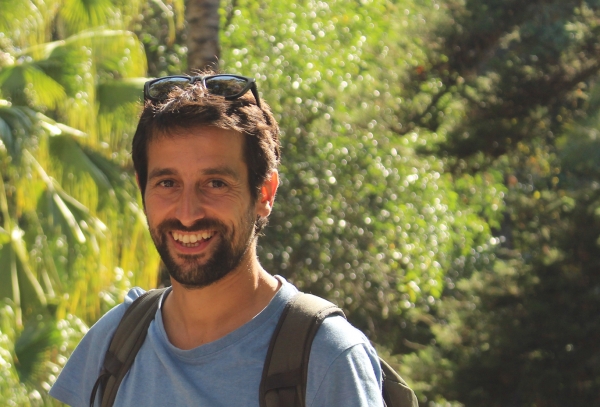Species such as the golden apple snail are putting the agricultural sector in the Ebro river basin in quite a predicament. Meanwhile, in the southern part of the Iberian Peninsula, water hyacinths are threatening to destroy the natural ecosystem of the Guadiana River. Invasive species change not only the habitat of many other species but they also directly impact the region's economy. Some of these species are already wreaking havoc on certain areas but others could do so in the future and have a huge impact, both environmentally and financially.
In order to help management centers and administrations make decisions, an international team of European researchers, led by the University of Newcastle and the Belgian Nature and Forests Agency with which the University of Córdoba collaborated, assessed the priority of erradicating different invasive species in Europe. One of the new aspects they also included is a study of possible scenarios regarding invasive species that are not currently present in the region or that are in an emerging stage, for which there are still opportunities to curb their spread.
"It would be ideal to erradicate all the invasive species but financial and labor resources are limited, even more so now, when we are dealing with other priorities", explains researcher Pablo González Moreno, an expert on invasive species and a member of the ERSAF (Assessment and Restoration of Farming and Forest Systems) group at the University of Córdoba, who collaborated on the study, researching the feasibility of erradicating different invasive plant species.
One of the species identified as a very high priority is the common myna from the starling family that has been able to establish small colonies in Spain and Portugal and that, due to its aggressive territorial nature and ability to adapt, could spread to more areas and displace other native species. Other very high priority species for Europe are the Berber toad, the ring-tailed coati (a carnivorous mammal) and the red-vented bulbul, another bird species.
Among the species that have yet to arrive in Europe but that could in the future, the highest priority is for the rusty crayfish (Faxonius rusticus), a freshwater crayfish that is causing serious problems in the northern US and Canada. Also a priority are the northern snakehead (Channa argus), an Asian fish that came to the US via collectors who had purchased them, and Cryptostegia grandiflora, a kind of vine native to Madagascar.
In order to draw up this list, the international team first analyzed the risk of establishment, spreading and the impact of different invasive species. This research was previously published and financed by the European Union. This risk ranking was compared to an assessment of erradication strategies for these species in terms of effectiveness, cost, level of acceptance by different social sectors, estimated time needed to act and possibility of the species coming back after being erradicated.
Having analyzed feasibility, the team met up to pool their assessments and together drew up a list of invasive species already established in Europe, as well as those who could do so in the future, according to their priority, supplying data on the regions where they are found or could be found, the erradication method, their effectiveness and their minimum and maximum cost, among other things. This is an open access list and any person or entity can consult it.
In this aspect, this study is important, not only in helping to manage the invasive species currently found in Europe, but also in having a future management scenario in case these species are able to get to Europe.
At a European level, this research has been able to create a network of researchers partnering up with managers in several European countries. "This is a way for the collective to get in touch with each other and to reach consensuses on the degree of management, something that was proving difficult to do in Europe. Having European regulations is an important step. Invasive species don't understand what borders are", concludes researcher Pablo González.
Olaf Booy, Pete A. Robertson, Niall Moore, Jess Ward, Helen E. Roy, Tim Adriaens, Richard Shaw, Johan Van Valkenburg, Gabrielle Wyn, Sandro Bertolino, Olivier Blight, Etienne Branquart, Giuseppe Brundu, Joe Caffrey, Dario Capizzi, Jim Casaer, Olivier De Clerck, Neil E. Coughlan, Eithne Davis, Jaimie T. A. Dick, Franz Essl, Guillaume Fried, Piero Genovesi, Pablo González-Moreno, Frank Huysentruyt, Stuart R. Jenkins, Francis Kerckhof, Frances E. Lucy, Wolfgang Nentwig, Jonathan Newman, Wolfgang Rabitsch, Sugoto Roy, Uwe Starfinger, Paul D. Stebbing, Jan Stuyck, Mike Sutton-Croft, Elena Tricarico, Sonia Vanderhoeven, Hugo Verreycken, Aileen C. Mill. Using structured eradication feasibility assessment to prioritize the management of new and emerging invasive alien species in Europe.Global Change Biology.https://doi.org/10.1111/gcb.15280


